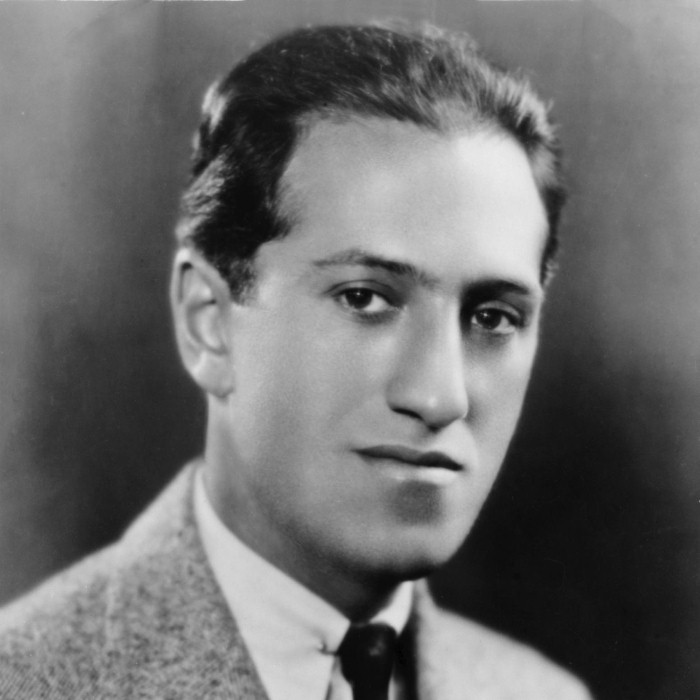Album Releases  view
view
Members
1 Male
Origin
 New York, USA
New York, USA
Genre
 Composer
Composer
Style
Classical
Mood
---
Born
1 Male
Origin
Genre
Style
Classical
Mood
---
Born
1898
Active ---
![]() 1937
1937
Cutout![]()
Alternate Name
Jacob Gershowitz
4 users
4 users
4 users
4 users
4 users
Artist Biography
Available in:
George Jacob Gershwin (Born September 26, 1898 – July 11, 1937) was an American composer and pianist. Gershwin's compositions spanned both popular and classical genres, and his most popular melodies are widely known. Among his best-known works are the orchestral compositions Rhapsody in Blue (1924) and An American in Paris (1928), as well as the contemporary opera Porgy and Bess (1935).
Gershwin studied piano under Charles Hambitzer and composition with Rubin Goldmark, Henry Cowell and Joseph Brody. He began his career as a song plugger, but soon started composing Broadway theatre works with his brother Ira Gershwin and Buddy DeSylva. He moved to Paris intending to study with Nadia Boulanger, who refused him, where he subsequently composed An American in Paris. After returning to New York City, he wrote Porgy and Bess, with Ira, and the author DuBose Heyward. Initially a commercial failure, Porgy and Bess later went on to be considered one of the most important American operas of the Twentieth century, and an American cultural classic.
Gershwin moved to Hollywood and composed numerous film scores until his death in 1937 from glioblastoma multiforme, a malignant brain tumor.
Gershwin's compositions have been adapted for use in many films and for television, and several became jazz standards recorded and covered in many variations. Many celebrated singers and musicians have performed his songs.
Biography :
Gershwin was of Russian Jewish and Ukrainian Jewish ancestry. His grandfather, Jakov Gershowitz, had served for 25 years as a mechanic for the Imperial Russian Army to earn the right of free travel and residence as a Jew; finally retiring near Saint Petersburg. His teenage son, Moishe Gershowitz, worked as a leather cutter for women's shoes. Moishe Gershowitz met and fell in love with Roza Bruskina, the teenage daughter of a furrier in Vilnius. She and her family moved to New York due to increasing anti-Jewish sentiment in Russia, changing her first name to Rose. Moishe, faced with compulsory military service if he remained in Russia, moved to America as soon as he could afford to. Once in New York, he changed his first name to Morris. Gershowitz lived with a maternal uncle in Brooklyn, working as a foreman in a women's shoe factory. He married Rose on July 21, 1895, and Gershowitz soon Americanized his name to Gershwine. Their first child, Ira Gershwin, was born on December 6, 1896, after which the family moved into a second-floor apartment on Brooklyn's Snediker Avenue.
Early life :
On September 26, 1898, George was born as second son to Morris and Rose Bruskin Gershwine in their second-floor apartment on Brooklyn's Snediker Avenue. His birth certificate identifies him as Jacob Gershwine, with the surname pronounced 'Gersh-vin' in the Russian and Yiddish immigrant community. He had just one given name, contrary to the American practice of giving children both a first and middle name. He was named after his grandfather, a one time Russian army mechanic. He soon became known as George, and changed the spelling of his surname to 'Gershwin' about the time he became a professional musician; other family members followed suit. After Ira and George, another boy Arthur Gershwin (1900–1981), and a girl Frances Gershwin (1906–1999) were born into the family.
The family lived in many different residences, as their father changed dwellings with each new enterprise in which he became involved. Mostly, they grew up around the Yiddish Theater District. George and Ira frequented the local Yiddish theaters, with George occasionally appearing onstage as an extra.
George lived a usual childhood existence for children of New York tenements: running around with his boyhood friends, roller skating and misbehaving in the streets. Remarkably, until 1908, he cared nothing for music, when as a ten year old he was intrigued by on hearing his friend Maxie Rosenzweig's, violin recital. The sound, and the way his friend played, captured him. At around the same time, George's parents had bought a piano, for lessons, for his older brother Ira, but to his parents' surprise, and Ira's relief, it was George who spent more time playing it.
Although his younger sister Frances was the first in the family to make a living through her musical talents, she married young and devoted herself to being a mother and housewife, thus surrendering any serious time to musical endeavors. Having given up her performing career, she settled upon painting as a creative outlet, which had also been a hobby George briefly pursued. Arthur Gershwin followed in the paths of George and Ira, also becoming a composer of songs, musicals, and short piano works.
With a degree of frustration, George tried various piano teachers for some two years, before finally being introduced to Charles Hambitzer by Jack Miller, the pianist in the Beethoven Symphony Orchestra. Until his death in 1918, Hambitzer remained Gershwin's musical mentor and taught him conventional piano technique, introduced him to music of the European classical tradition, and encouraged him to attend orchestral concerts. Following such concerts, young Gershwin would essentially try to play, on the piano at home, the music he had heard from recall, and without sheet music. As a matter of course, Gershwin later studied with the classical composer Rubin Goldmark and avant-garde composer-theorist Henry Cowell, thus formalizing his classical music training.
Wide Thumb
Clearart
Fanart


Banner

User Comments
 No comments yet..
No comments yet..

















